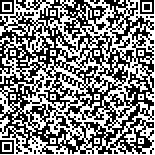下载中心
优秀审稿专家
优秀论文
相关链接
摘要

叶面积指数是对地遥感的关键参数。间接测量法快速高效,已广泛应用于叶面积指数的地面测量和遥感验证中,服务于众多行业和领域,表现为论文被引数远远大于发文数。从理论基础、代表算法、测量仪器、影响因素几个方面全面总结了叶面积指数间接测量方法的发展和现状,指出聚集/尺度效应、叶倾角分布、木质组分、地形效应是影响测量精度的关键因素,针对这些影响因素对未来发展方向进行了展望。
Leaf Area Index(LAI) is a key parameter for terrestrial remote sensing. Indirect methods are fast and efficient, and they arewidely used in ground measurement and the remote sensing validation of the LAI. These methods servea large number of industries and fields, as theircitation count is far greater than theirliterature count. This paper comprehensively reviews the development and current status of indirect LAI measurement with regard to theories, algorithms, instruments, and influence factors. The latest progress and future prospects are summarized and discussed onthe basis off our challenges, including clumping/scale effect, leaf angle distribution, woody component, and slope effect. First, the basic concepts and theoretical background are summarized to provide an overview of indirect LAI measurement. The basic concepts include LAI definition, gap probability, leaf angle distribution, leaf projection function, clumping index, needle-to-shoot area ratio, and woody-to-total area ratio. Theoretical derivations begin with the introduction of Beer's law on indirect LAI measurement, followed by three essential adaptations concerning leaf angle distribution, clumping effect, and woody component. Second, representative methods for quantifying the clumping effect are reviewed, with the clumping effect beingthe most important factor. These methods consist of the finite-length averaging method, the gap-size distribution method, the combination of finite-length averaging and gap-size distribution method, and the path length distribution method. Third, representative instruments for indirect measurement are reviewed. These instruments include LAI-2000, TRAC, line quantum sensors (AccuPAR, SunScan, and LAInet), DEMON,imaging instruments (HemiView, MVI, and MCI), and LiDAR. Airborne and spaceborne LiDAR are also reviewed because they also use Beer's law as the indirect LAI measurement. Finally, four key factors that limit indirect LAI measurement accuracy are discussed. These factors are the clumping/scale effect, leaf angle distribution, woody component, and slope effect. The mixed effects of these factors are also explained.The clumping effect has attracted the most attention in the community, with several related methods having beendeveloped and being widely used in field measurement. The non-randomness inside canopies and the scale effect of measurement is also worth studying further. The theory of leaf angle distribution is well-developed, whereas the spherical distribution assumption (G≡0.5) is often used because of the inconvenience of measurement. The spherical distribution assumption should be used with caution because it is only valid near a zenith angle of 57.3°. The efforts to develop fast and automatic methods for measuring leaf angle distribution show greatpromise. The importance of woody components is widely recognized,but they are always ignored in measurement because commercial instruments are incapable of distinguishing woody components. Near-infrared technology and instruments should be applied to ground measurement to distinguish the LAI from the plant area index. The slope effect has attracted more attention than before. Research shows that it canbe ignored when the slope is less than 30°; otherwise, it could be a moderate source of error. Generally, making a break through in theories is difficult, although the main constraints have been identified and much progress hasbeen made. With a focuson these aspects, developing new instruments and calculation and validation methods, further exploring existing data, and finally improving the accuracy and stability of indirect LAI measurement are endeavors worth pursuing.

